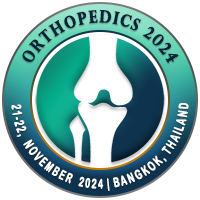
H. Serap Inal
Istanbul Galata University, TurkeyTitle: Recent approaches in corsets for adolescent idiopathic scoliosis
Abstract
The most preferred Aadolescent idiopathic scoliosis (AIS) corsets are Cheneaux corset and Rigo-Cheneaux or Cheneaux-Gensingen corsets, which are made of semi-flexible, non-allergic polyethylene material by computer aided manufacturing. Although they are still some controversies, they are indicated in cases where bone development has not been completed (Risser sign is 3/less than 3) and the Cobb angle of the curvature is between 25°-45° in AIS. However, the factors affecting the prognosis of the curvature are age, menarche, gender, curvature pattern, bone development level.
According to the guidelines, rigid braces should be used for periods varying between 8-24 hours daily and should be used with the smallest angle or with an angle below 30°, if possible, until the age of growth is completed (Risser 4; menarche). This intensive and long-term use of corsets may reduce the child's interest and compliance with the treatment, which is an important barrier. In addition, the corsets are rigid, or elastic directly affects their acceptance by the children. Undoubtedly, they are more satisfied with the use of elastic corsets indicated only at low angles. However, it cannot be expected to achieve correction if they are not used properly. Therefore, teamwork against these barriers and the knowledge, experience, and interdisciplinary approach of the team (physician, orthotist, physiotherapist) are important for the effectiveness of the treatment.
The forces applied varies according to the characteristics of the curvature. The 3-point principle and dynamic traction are for shifting the vertebral column towards the midline by applying transverse and axial forces and supporting the last upper vertebra in the proximal part of the curvature and the pelvis in the distal. For the effectiveness of the corsets and the comfort of the children, the forces should be given widely over pressure tolerant areas with the plastazote padded total contact surface.
Biography
H. Serap Inal is a physiotherapist currently teaching in the Department of Physiotherapy-Rehabilitation in Istanbul Galata University. She worked as Assistant Professor in King Saud University, The College of Applied Medical Sciences and as Consultant in Orthotics Section, Physiotherapy Department in King Khalid University Hospital, Riyadh, Saudi Arabia between 1984-1990. While she was the academic chair in Marmara University initiated The Adapted Physical Activity (APA) Certificate Program with her colleagues in 2002, which can be considered as the pioneer in this area in Turkey. She headed the Istanbul University, School of Physical Education and Sports between 2006-2009, and same The APA Certificate Program was also structured during her time in this university. She has books (Turkish) in the areas of exercise and sports biomechanics, upper extremity prosthesis, orthotics in neuromuscular disorders, and chapters (English) in geriatric rehabilitation, adapted physical activity, supported employment for people with ID. She was a part of the European University Diploma in Adapted Physical Activity-EUDAPA between 2010-2016; and is a member of ICHPER-SD (life member), IFAPA, Turkish Neuromuscular Disorders Society, Turkish Physical Therapy Association, and The Foundation for Global Community Health-GCH. She is an ACRE certified supported Employment specialist from Virginia Commonwealth University since 2018.

